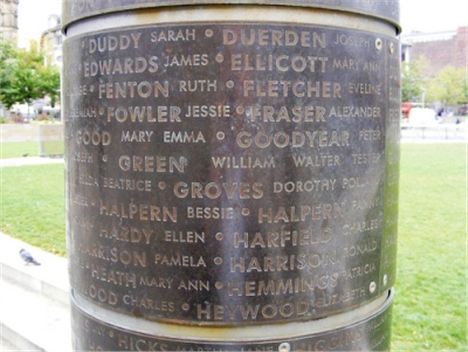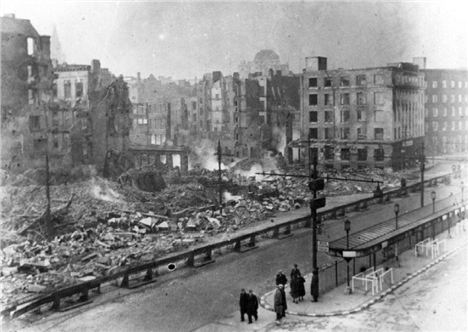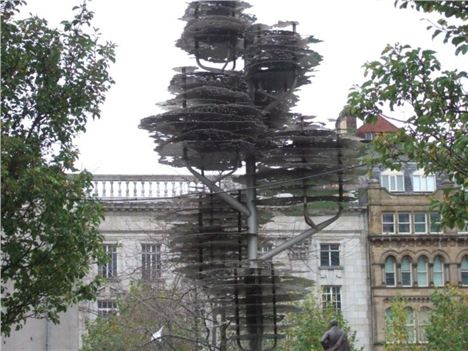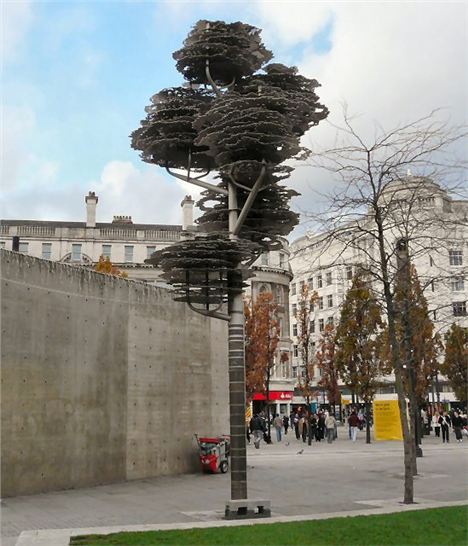Category: Good
What and when?
The Tree of Remembrance, Piccadilly Gardens, installed in 2005. An eleven metre tree composed of steel and bronze.
Who?
The artists were Wolfgang and Heron, or rather Fiona Heron and the splendidly named Wolfgang Buttress – the best moniker around.
Why?
The Tree of Remembrance marks the many hundreds of civilians who died in the Nazi bombing of Manchester in World War II, particularly on 22/23 December 1940. Over the two nights around 500 German bombers dropped 467 tons of high explosive and 2000 incendiary bombs on the city.
The names of the dead appear around the trunk of the tree.
This is an appropriate location for the memorial. Piccadilly Hotel and City Tower were built on the site of blitzed textile warehouses.
The only survivor of the pre-1940 buildings to the south west of this point, is the Britannia Hotel (formerly Watts Warehouse). This was spared because the company fire brigade refused to move out as other buildings were demolished to stop the fire spreading. They even stayed put when the proper fire brigade turned off their water supply, smothering the flames with cloth close at hand.
My father can remember as a young lad walking out onto the moors above Shawclough in Rochdale where the ancestral home lies, to watch the distant fires as Manchester burned.
He watched for two hours the glow from the flames, the bomb detonations and the swish of searchlights across the sky. The strangest thing for the young lad was that because of the distance and the direction of the wind he couldn't hear any noise of war.
Manchester burning appeared as a lethal silent movie, enthralling but deadly.
What's the best thing about the Tree of Remembrance?
It's a piece of public art that seems to capture the reflective, sorrowful mood of its theme. It also merges and matches with the real trees and the urban landscape. The Tree makes a walk across Piccadilly more enjoyable. Unlike most public art it doesn’t get in the way, it enhances the space it occupies. There's something else too.
Go on?
The landscaping in Piccadilly Gardens is from the Japanese practice of Tadao Ando. The most controversial aspect is the concrete wall (laughably called a ‘pavilion') which contains Caffe Nero. It’s justifiably hated as an ugly barrier to movement through the city.
But behind the Tree of Remembrance is a thin sliver of curving concrete wall standing apart from the main ‘pavilion’. This sweet slab acts as the perfect foil for the Tree of Remembrance.
For once, the two distinct elements, the landscape and artwork, combine effortlessly. This is a rare quality with public art.
It's interesting that the wall designer, Ando is Japanese. By happen chance, the cut steel and bronze panels, high in the tree, make up bundles of foliage on the boughs. These have the same delicate ethereal character that inhabits the pen and ink drawings of Japanese artists such as Hokusai or Hiroshige.
Any other public artworks around you’d like to mention?
Yes, the Robert Peel and Duke of Wellington statues on the Oldham Street side are fine Victorian figurative works.
But the Queen Victoria statue in the Gardens by Edward Onslow from 1901 is hilariously clumsy. It got this write-up from the Westminster Review when it was unveiled.
'It is at once the most pretentious, the most incoherent and the most inept of any sculptural monument one has ever seen in England.’
It's easy to see what the Westminster Review is going on about.
Queen Victoria sits like a fat ugly beetle in a weird architectural frame. The bombastic excess displayed in this sculpture is a world away from the poignant beauty of Wolfgang and Heron's Tree of Remembrance.
Vicky, cast in bronze, proves yet again that not everything old is good. The 'pavilion' proves that not everything new is.
This article was first posted in 2008 and has been re-edited for the new Manchester Confidential.
You can follow Jonathan Schofield on Twitter here@JonathSchofield or connect via Google+
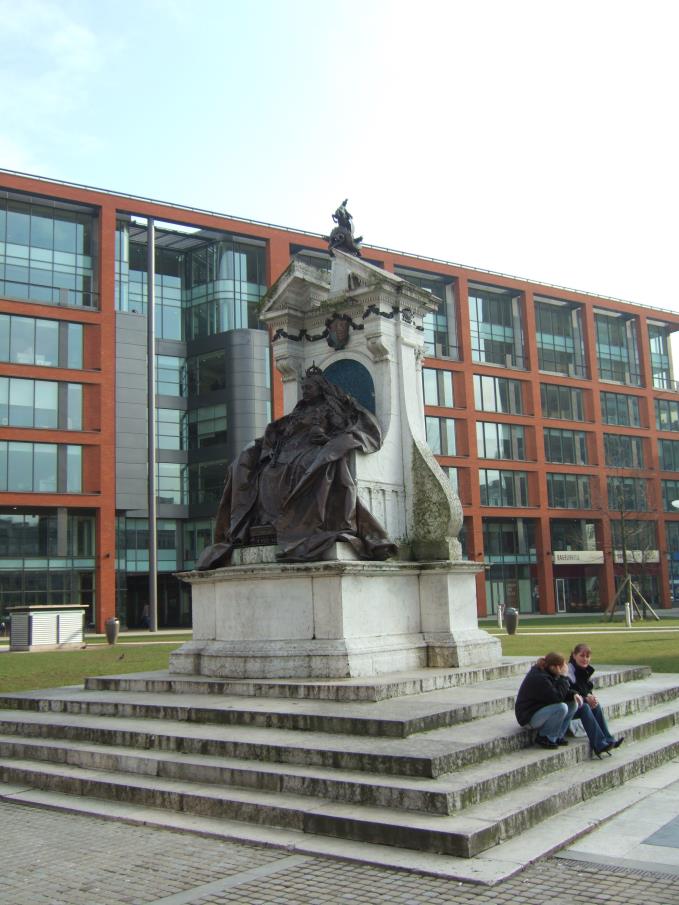
'Most inept' monument









